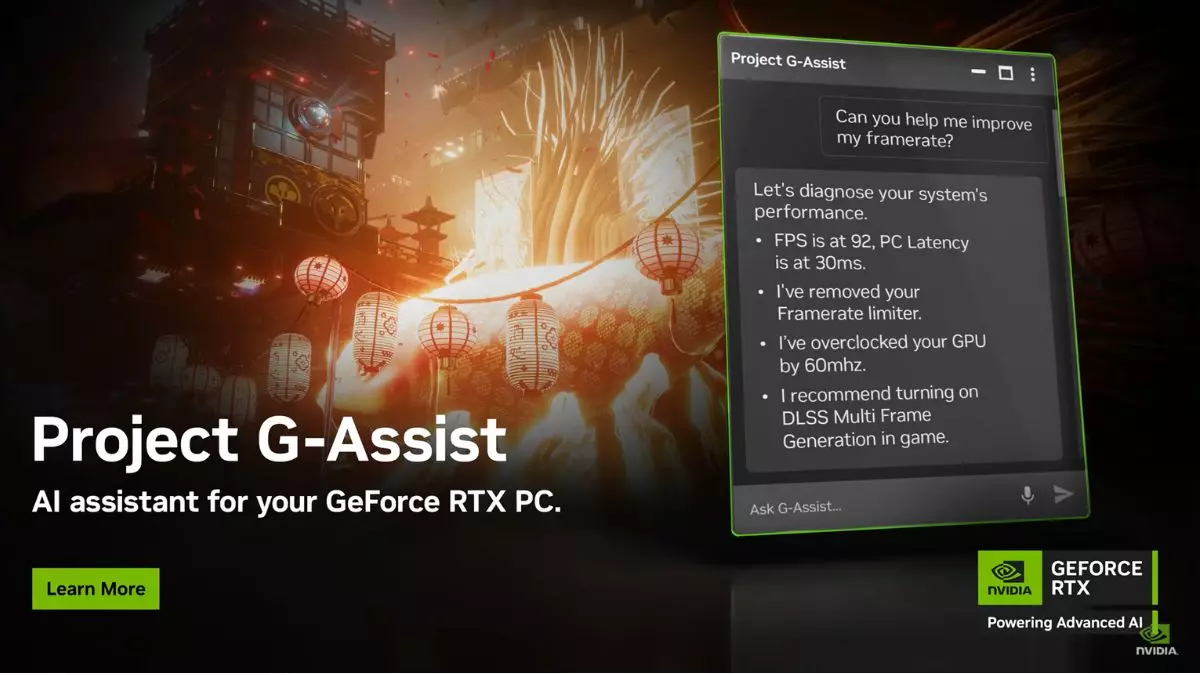Nvidia’s recent unveiling of Project G-Assist marks a revolutionary step in the convergence of artificial intelligence and gaming. Designed specifically for users with GeForce RTX GPUs, this local AI assistant effectively transforms the gaming experience by allowing for an unprecedented level of personalization and optimization. Unlike other cloud-based assistants that risk data privacy, G-Assist processes all information directly on the device, keeping user data secure. This innovative approach to AI integration shouldn’t go unnoticed, as it heralds a new era where technology works for the user without unnecessary risk.
A Personalized Gaming Experience
At the heart of G-Assist is its focus on tailoring gaming environments to individual preferences. It adapts system settings and game configurations to elevate gameplay, enhancing the experience in real-time. By employing a small language model fine-tuned for gaming-specific queries, users can engage with the assistant not just as a tool, but as a companion capable of offering strategies and analyzing gameplay performance. This personalized level of interaction could redefine how gamers approach not only gaming but their overall tech ecosystem.
Brilliant Features at Your Fingertips
The capabilities of G-Assist are both impressive and practical. Functions like real-time diagnostics, power efficiency optimization, and GPU overclocking represent significant advancements for gamers who may not be technically savvy. These features make it easier for users to engage in high-performance gaming, while complex tasks that once required manual adjustments can now be done through simple commands. Such a blend of user-friendliness and robust functionality positions G-Assist as an essential asset for anyone serious about gaming.
A Technical Marvel
While the assistant is powered by a small language model built on a Meta Llama-based Instruct framework, the fact that it can run seamlessly on a single RTX GPU speaks to Nvidia’s engineering prowess. By eliminating latency issues and subscription fees typically associated with AI services, G-Assist sets a high benchmark for tech solutions in the gaming sector. The ability to support text, voice, and visual inputs distinctly demonstrates a leap in user interface design that could inspire other tech industries to rethink their approach.
Room for Improvement and Future Potential
Nonetheless, the current limitations of G-Assist—such as the exclusive support for the English language and the lack of availability on RTX laptops—should not be overlooked. While the potential for expansion is enormous, it’s crucial for Nvidia to address these shortcomings. Additionally, broadening language support will be vital in appealing to a more diverse, global user base. The future iterations of this technology could transform G-Assist into a universally useful tool for gamers everywhere.
The Competitive Edge in Gaming
As competition heats up in the gaming industry, Nvidia’s G-Assist gives it a unique edge, showcasing their commitment to enhancing user experiences. In a market flooded with various gaming tools and aids, this innovative AI assistant stands apart by merging cutting-edge technology with genuine user needs, a testament to Nvidia’s forward-thinking approach. The implications for the future are massive; if trends continue, we could see AI assistance become a standard in gaming setups, potentially changing how we understand and engage with interactive entertainment altogether.

